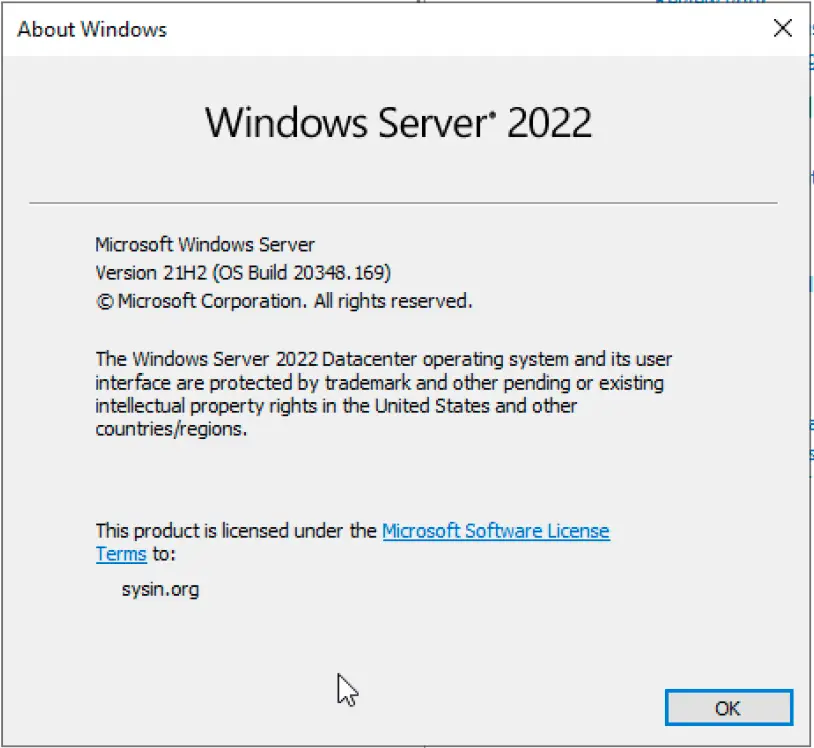[Download] Windows Server 2022 LTSC RTM ISO image
Microsoft is always so “surprise” to do things. The Windows Server operating system, which is usually released in September or October, is suddenly released in August.
Yes, Microsoft’s latest server operating system Windows Server 2022 LTSC RTM version has been released and is currently available on the MSDN subscription portal.
Microsoft has not yet written an official blog to announce the news, but the image file has arrived early, which of course can be considered a release, so we don’t need to wait until the official release.

The “What’s new in Windows Server 2022” support page lists major changes in the new Server version.
Security
The new security capabilities in Windows Server 2022 combine other security capabilities in Windows Server across multiple areas to provide defense-in-depth protection against advanced threats. Advanced multi-layer security in Windows Server 2022 provides the comprehensive protection that servers need today.
Secured-core server
Secured-core server provides protections that are useful against sophisticated attacks and can provide increased assurance when handling mission critical data in some of the most data sensitive industries. It is built on three key pillars: simplified security, advanced protection, and preventative defense.
Simplified security
When you buy hardware from an OEM for Secured-core server, you have assurance that the OEM has provided a set of hardware, firmware, and drivers that satisfy the Secured-core promise. Windows Server systems will have easy configuration experiences in the Windows Admin Center to enable the security features of Secured-core.
Advanced protection
Secured-core servers use hardware, firmware, and operating system capabilities to the fullest extent to provide protection against current and future threats. The protections enabled by a Secured-core server are targeted to create a secure platform for critical applications and data used on that server. The Secured-core functionality spans the following areas:
- Hardware root-of-trust
Trusted Platform Module 2.0 (TPM 2.0) come standard with servers capable of using Secured-core servers. TPM 2.0 provides a secure store for sensitive keys and data, such as measurements of the components loaded during boot. This hardware root-of-trust raises the protection provided by capabilities like BitLocker, which uses TPM 2.0 and facilitates creating attestation-based workflows that can be incorporated into zero-trust security strategies.
- Firmware protection
There is a clear rise in security vulnerabilities being reported in the firmware space given the high privileges that firmware runs with and the relative opacity of what happens in firmware to traditional anti-virus solutions. Recent reports show that malware and ransomware platforms are adding firmware capabilities raising the risk of firmware attacks that have already been seen targeting enterprise resources like Active Directory domain controllers. Using processor support for Dynamic Root of Trust of Measurement (DRTM) technology, along with DMA protection, Secured-core systems isolate the security critical hypervisor from attacks such as this.
- Virtualization-based security (VBS)
Secured-core servers support VBS and hypervisor-based code integrity (HVCI). VBS and HVCI protect against the entire class of vulnerabilities used in cryptocurrency mining attacks given the isolation VBS provides between the privileged parts of the operating system such as the kernel and the rest of the system. VBS also provides more capabilities that customers can enable, such as Credential Guard, which better protects domain credentials.
Preventative defense
Enabling Secured-core functionality helps proactively defend against and disrupt many of the paths attackers may use to exploit a system. This set of defenses also enables IT and SecOps teams better utilize their time across the many areas that need their attention.
More…
Download
Via: deskmodder





